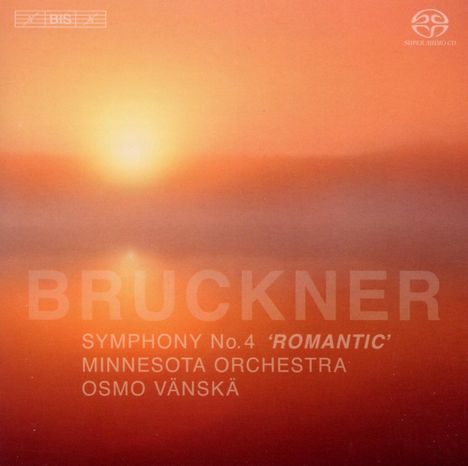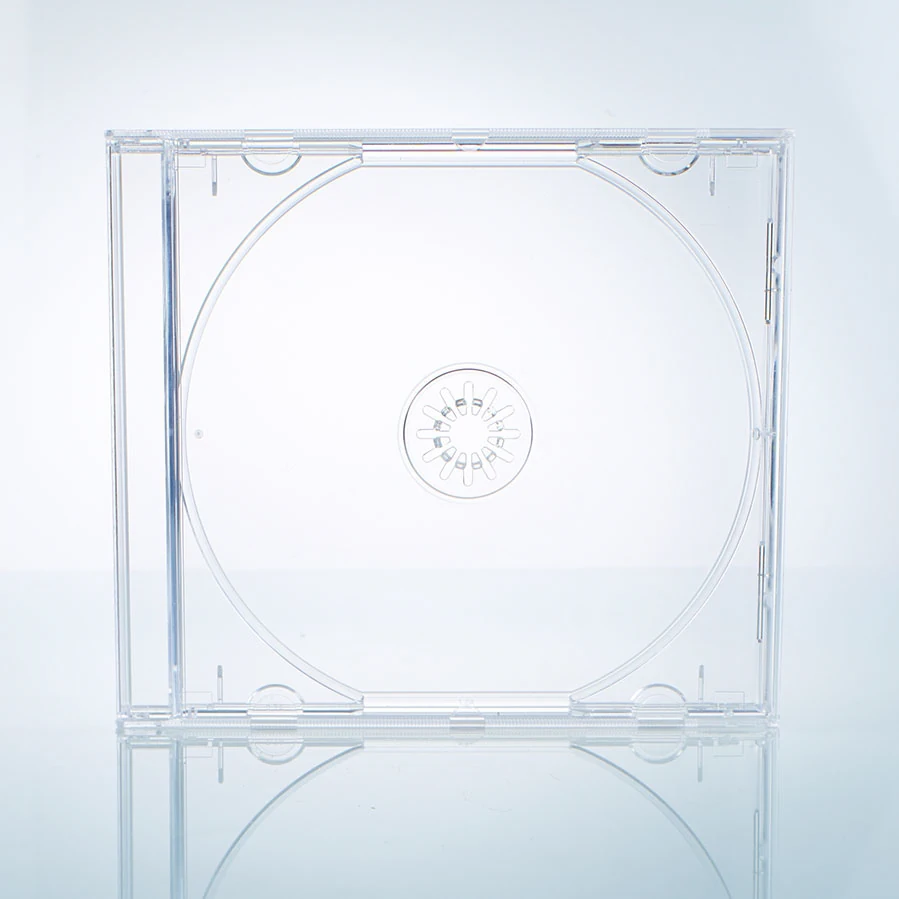Anton Bruckner: Symphonie Nr.4 auf Super Audio CD
Symphonie Nr.4
Die SACD verwendet eine höhere digitale Auflösung als die Audio-CD und bietet außerdem die Möglichkeit, Mehrkanalton (Raumklang) zu speichern. Um die Musik in High-End-Qualität genießen zu können, wird ein spezieller SACD-Player benötigt. Dank Hybrid-Funktion sind die meisten in unserem Shop mit "SACD" gekennzeichneten Produkte auch auf herkömmlichen CD-Playern abspielbar. Dann allerdings unterscheidet sich der Sound nicht von einer normalen CD. Bei Abweichungen weisen wir gesondert darauf hin (Non-Hybrid).
Lassen Sie sich über unseren eCourier benachrichtigen, falls das Produkt bestellt werden kann.
- Tonformat:
- stereo & multichannel (Hybrid)
- Künstler:
- Minnesota Orchestra, Osmo Vänskä
- Label:
- BIS
- Aufnahmejahr ca.:
- 2009
- UPC/EAN:
- 7318599917467
- Erscheinungstermin:
- 26.5.2010
Ähnliche Artikel
Die „4.“ gehört zu Bruckners populärsten Werken seit ihrer Uraufführung in Wien 1881 (die selbst ein sensationeller Erfolg wurde; nach jedem Satz wurde der Komponist herausgerufen und musste sich verbeugen). Den Beinamen „Romantische“ hat schon Bruckner selbst benutzt, wohl mehr die literarische Gattung der mittelalterlichen Romanze als die romantische Liebe der Neuzeit im Kopf habend. Denn als Programm nennt er „eine mittelalterliche Stadt – erstes Tageslicht – stolze Ritter ... das Wunder der Natur umgibt sie...“.
Hier eingespielt ist die revidierte Fassung von 1888 (der stets unsichere Bruckner hat diese Komposition seit ihrer Urfassung, die 1876 entstand, immer wieder überarbeitet), die 1890 veröffentlicht wurde und viel weniger bekannt ist als ihre Vorgängerinnen, obschon sie jene Gestalt zeigt, in der Bruckner die Symphonie veröffentlichte und in der sie sich den Ruf als eines seiner hervorragendsten und zugänglichsten Werke erwarb.
1988 version. Edited by Benjamin M. Korstvedt.
Symphony No. 4 in E-flat major has belonged to Anton Bruckner's most popular works ever since its first performance, in Vienna 1881, when the composer was reportedly called out to take a bow after each movement. It is often called the ‘Romantic', a nickname that Bruckner himself used, most probably in reference to the literary genre of the medieval romance, rather than to the concept of romantic love. Indeed, Bruckner is claimed to have provided a sort of programme to the work, setting the scene for its opening as follows: ‘Medieval town – first daylight – on proud chargers knights sally forth ... the wonder of nature surrounds them ...' What was performed in Vienna in 1881 was a second, revised version of the symphony, which had actually already seen first light in 1874. In spite of the success of the revised version, further revisions took place before publication, resulting in the so-called ‘1888 version' recorded here. Although this remained the preferred version for several decades, it later became discredited, as it was assumed that the revisions it contained were the product of others than the composer himself. The rehabilitation of the 1888 version is to a large extent due to the efforts of the musicologist Benjamin Korstvedt, who in 2004 prepared the first modern edition of the 1888 version for the Bruckner Collected Works edition. In his liner notes to the present disc, Korstvedt discusses this background, giving a number of interesting illustrations of the differences between editions.
It has been said that Bruckner took Beethoven's Symphony No. 9 as the starting point for his symphonies. It therefore seems logical that Osmo Vänskä and his Minnesota Orchestra have chosen to record this work after their acclaimed cycle of Beethoven's symphonies. Re-released as a boxed set in 2009, the Beethoven recordings were described as ‘unquestionably one the great Beethoven cycles' on website ClassicsToday. com and ‘unswervingly rewarding' in Classic FM Magazine, while the reviewer in American Record Guide found it ‘hard to think of a more distinguished Beethoven cycle by an American orchestra since the legendary Toscanini traversal of 1939.'
Disk 1 von 1 (SACD)
Sinfonie Nr. 4 Es-Dur "Romantische" (3. Fassung 1887/88)
-
1 1. Ruhig bewegt (nur nicht schnell)
-
2 2. Andante
-
3 3. Scherzo: Bewegt - Trio: Gemählich
-
4 4. Finale: Mäßig bewegt
Mehr von Anton Bruckner
-
Anton BrucknerKlavierwerkeCDAktueller Preis: EUR 7,99
-
Anton BrucknerSymphonien Nr.0-910 CDsVorheriger Preis EUR 49,99, reduziert um 0%Aktueller Preis: EUR 29,99
-
WDR Rundfunkchor Köln - Ding, Dong, Merrily on High (Chorwerke zu Advent & Weihnachten)CDVorheriger Preis EUR 12,99, reduziert um 0%Aktueller Preis: EUR 7,99
-
Anton BrucknerSämtliche Symphonien in Orgeltranskriptionen13 CDsAktueller Preis: EUR 56,99











